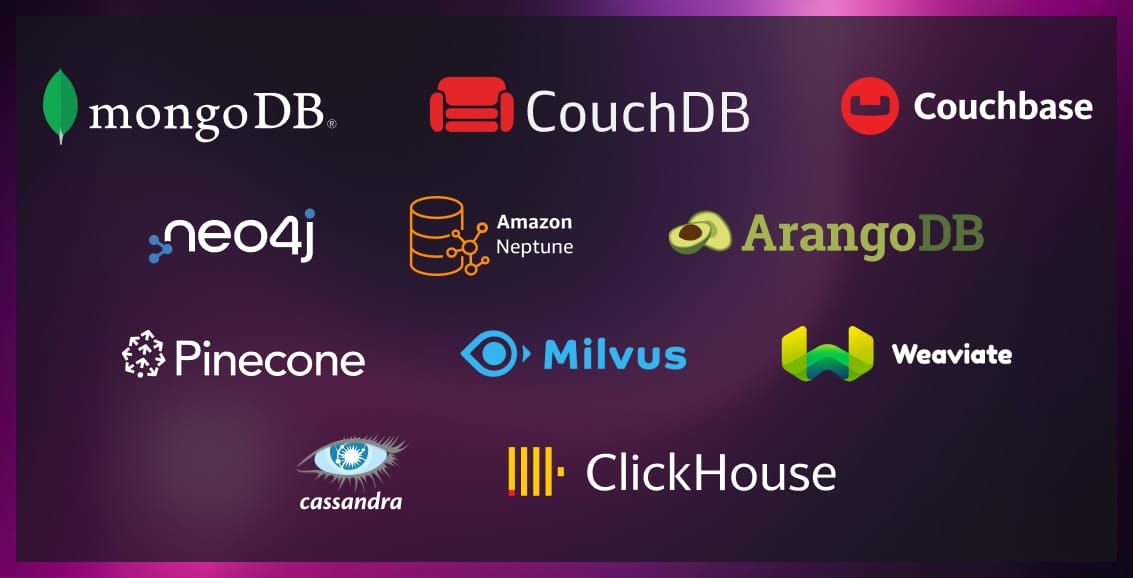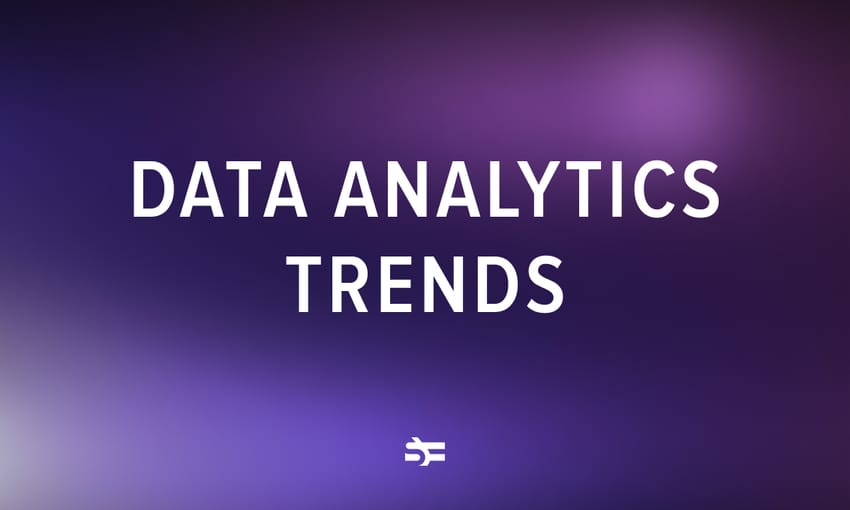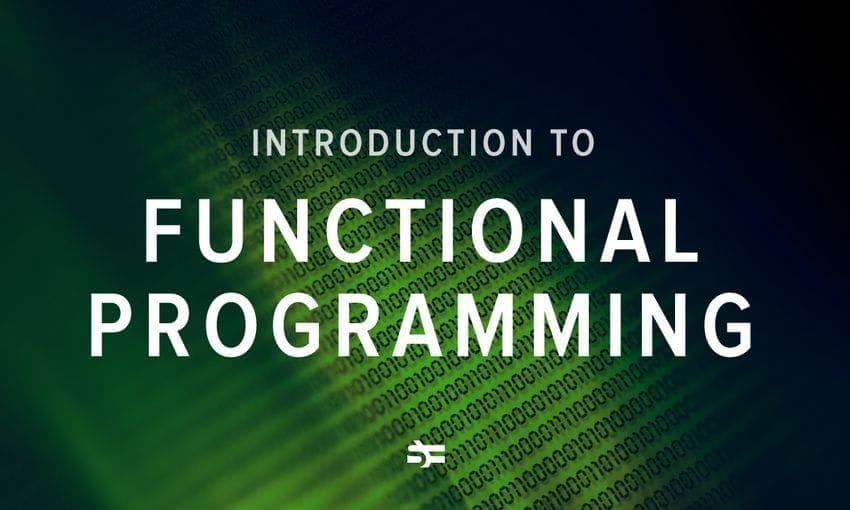In today’s data-driven world, businesses rely heavily on databases to store, manage, and analyze their information. Choosing the right type of database can significantly impact your organization’s efficiency, scalability, and overall success.
In this article, we offer an overview of various database types and tips on how to choose the right one for your business.
What is a database?
A database is an organized collection of data that is stored and managed in a way that allows for efficient retrieval, modification, and analysis. Data within a database is typically organized into tables, rows, and columns, or other structured formats that make it easy to search and manipulate.
For example, this is how a database with customer data could look:

To drive insights from databases, SQL and other programming languages are commonly used.
Databases are widely used in tracking sales, inventory management, and financial records.
They can also be applied for storing user profiles, content management, and logging user interactions.
What kinds of databases exist?
There are hundreds of different database types. But they can be broken down into 2 categories: relational and non-relational. Let’s see what’s the difference between the two.
Relational databases
Relational databases are structured around tables, rows, and columns, where data is organized into predefined schemas. These databases use Structured Query Language (SQL) for data manipulation and querying. The data in relational databases is often highly structured and follows a clear, consistent format.
Let’s say you want to find all customers who have made purchases totaling over $1,000 and who registered after January 1, 2022. You could write a query that would only select the required fields and information from the table.
SELECT
First_Name,
Last_Name,
Email,
Phone_Number,
Total_Purchases,
Loyalty_Points
FROM
Customers
WHERE
Total_Purchases > 1000
AND Registration_Date > '2022-01-01';
Relational databases are ideal for businesses that need:
- Consistency and accuracy. Financial institutions, e-commerce platforms, and other businesses where data integrity is paramount often rely on relational databases.
- Complex queries. Using SQL, you can manipulate and transform data to analyze sales trends or generate financial reports.
- Transactional data. Systems that need to track transactions, such as order processing systems, benefit from the ACID (Atomicity, Consistency, Isolation, Durability) properties of relational databases.
However, relational databases also have drawbacks, which means they aren’t always ideal:
- Scalability issues. Relational databases can struggle with horizontal scaling, meaning they may not perform as well with massive datasets or high transaction volumes without significant investment in infrastructure.
- Rigidity. The need for a predefined schema can make it difficult to accommodate changes in data structure, requiring careful planning and potentially costly migrations if your data needs to evolve.
Non-relational databases
Non-relational databases, also known as NoSQL databases, do not rely on a predefined schema and can store data in various formats, including key-value pairs, documents, graphs, and wide columns. These databases are designed to handle unstructured or semi-structured data and can scale horizontally more easily than relational databases.
In a NoSQL database, for example, MongoDB, data would be stored like this:
{
"customer_id": "001",
"first_name": "John",
"last_name": "Doe",
"email": "john.doe@email.com",
"phone_number": "555-1234",
"address": {
"street": "123 Maple St.",
"city": "Springfield",
"state": "IL",
"zip_code": "62704"
},
"registration_date": "2022-01-15",
"last_purchase_date": "2023-08-01",
"total_purchases": 1200,
"loyalty_points": 150,
"purchase_history": [
{
"purchase_id": "A001",
"date": "2023-08-01",
"amount": 300,
"items": [
{"item_id": "P01", "name": "Laptop", "price": 300}
]
},
{
"purchase_id": "A002",
"date": "2023-05-10",
"amount": 900,
"items": [
{"item_id": "P02", "name": "Smartphone", "price": 900}
]
}
]
}
Each attribute of the customer like first name, email, or phone number is stored as a key-value pair within the document.
The address is stored as an embedded document, containing the street, city, state, and zip code as subfields. This allows for a more hierarchical and organized structure.
The purchase history field contains an array of documents, where each document represents a purchase made by the customer. This array structure allows for storing multiple related records within a single document.
To work with a NoSQL database, you use NoSQL or other query languages invented by platform providers. For example, a non-relational database Neo4j uses Cypher.
In a graph database, you have nodes instead of columns. Imagine we have the following structure:
Customernodes with properties likename,email,loyalty_points.Purchasenodes with properties likedate,amount.Productnodes with properties likename,price.
Nodes are connected with relationships. This links make it easier to retrieve important data later:
(:Customer)-[:MADE]->(:Purchase)(:Purchase)-[:INCLUDES]->(:Product)
You can use Cypher to find customers who have purchased a product named “Laptop” and have more than 100 loyalty points:
MATCH (c:Customer)-[:MADE]->(p:Purchase)-[:INCLUDES]->(pr:Product)
WHERE pr.name = "Laptop" AND c.loyalty_points > 100
RETURN c.name, c.email, c.loyalty_points, p.date, p.amount
Non-relational databases are great for organizations that need:
- Flexibility. Startups, digital media companies, or other businesses that deal with rapidly changing data formats or evolving business models may prefer the flexibility of non-relational databases.
- Large-scale data. Companies handling large volumes of unstructured or semi-structured data, such as social media platforms or IoT applications, often choose non-relational databases for their scalability.
- Real-time analytics. Businesses that need to analyze data in real time, like recommendation engines or fraud detection systems, can benefit from the fast read and write capabilities of non-relational databases.
However, non-relational databases also have some cons:
- Lack of standardization. With no standard query language like SQL, working with non-relational databases can require specialized knowledge and tools, which can make data management and querying difficult.
- Limited support for complex queries. Non-relational databases may struggle with complex queries and relationships. This makes them less suitable for applications requiring intricate data analysis.
What are popular databases used for business?
While you can find mentions of many database types such as key-value pairs, object-oriented, navigational, in reality they are not widely used. In this section, we look at four database categories that cover most common use cases and are usually applied in data engineering.

Document databases
Document databases are a type of NoSQL database. They use a document-oriented data model where each record is stored as a document, typically in a format like JSON (JavaScript Object Notation), BSON (Binary JSON), or XML.
Unlike traditional relational databases, document databases do not require a predefined schema. Documents in a collection can have different structures. They can even contain nested structures, such as arrays and other documents, allowing for complex and hierarchical data representations.
Each document contains both the data and its schema, which makes it easier to evolve the data structure over time without requiring complex migrations.
Usually used for:
- Blogging platforms, news websites;
- Product catalogs;
- User profiles;
- User activity logs.
Popular databases:
- MongoDB. One of the most widely used document databases, MongoDB stores data in the BSON format and offers rich querying and indexing features.
- CouchDB. Uses JSON for document storage and supports a RESTful HTTP API for interacting with the database. It is known for its ease of replication and synchronization.
- Couchbase. Combines document storage with a distributed architecture and in-memory caching, providing high performance and scalability.
Graph databases
Graph databases are a type of NoSQL database designed to store and manage data in the form of graphs. These databases use graph structures consisting of nodes, edges, and properties to represent and store data:
- Nodes. Represent entities or objects (e.g., people, products, locations). Each node can have properties that describe the entity.
- Edges. Represent relationships between nodes (e.g., “friends with,” “purchased,” “located in”). Edges can also have properties that describe the nature or attributes of the relationship.
- Properties. Both nodes and edges can have properties, which are key-value pairs that store additional information.
Used for:
- Social media platforms, professional networks;
- Product recommendations, content suggestions;
- Financial transactions;
- Enterprise knowledge management.
Popular databases:
- Neo4j. One of the most widely used graph databases, Neo4j uses Cypher as its query language and is known for its robust graph traversal capabilities and strong community support.
- Amazon Neptune. A fully managed graph database service provided by AWS that supports both property graph RDF (Resource Description Framework) and models (using Apache TinkerPop Gremlin and SPARQL).
- ArangoDB. A multi-model database that supports graph, document, and key-value data models, which makes it suitable for different types of data and use cases.
Vector databases
Vector databases are specialized databases designed to store, search, and manage high-dimensional vector data. In the context of machine learning and artificial intelligence, vectors often represent data points such as text, images, or any object that can be encoded into a numerical format. Each vector is typically a list of floating-point numbers that encapsulates the features of the data point in a multi-dimensional space.
Used for:
- Similarity search (unlike keyword searches);
- NLP;
- Image and video retrieval across different industries.
Popular databases:
- Pinecone. Pinecone is a fully managed vector database service designed for machine learning applications. It offers features like vector search, filtering, and real-time indexing, making it a popular choice for AI-driven applications.
- Milvus. Milvus is an open-source vector database designed for large-scale similarity search. It supports a variety of index types and is optimized for high-dimensional data. It is often used in NLP and image retrieval.
- Weaviate. Weaviate is an open-source vector search engine where data objects can be stored and searched as vectors. It also supports hybrid search (both vectors and keywords).
Column databases
Column databases, also known as columnar databases or column-family databases, are designed to store, retrieve, and manage data by columns rather than rows. This approach differs from traditional row-oriented databases, where all data for a given row is stored together. Columnar storage offers significant advantages for certain types of workloads, particularly in analytical processing and data warehousing.
Used for:
- Sales data analysis;
- Real-time transaction analytics.
Popular databases:
- Apache Cassandra. A distributed NoSQL database that uses a column-family model. It is designed for scalability and high availability, making it popular for big data applications.
- ClickHouse. An open-source columnar database management system designed for real-time analytics. It offers high performance for analytical queries and is used in various industries for data processing.
Choosing the right database for your business
When deciding between a relational and non-relational database, consider the following:
- Data structure. If your data is highly structured and unlikely to change, a relational database is likely a better choice. If your data is unstructured or semi-structured, or if you anticipate frequent changes in the data schema, a non-relational database may be more suitable.
- Scalability requirements. For businesses expecting significant growth in data volume or needing to handle large datasets across distributed environments, non-relational databases offer better scalability. Relational databases, however, are ideal for organizations requiring strong consistency and accuracy in smaller, more controlled environments.
- Query complexity. If your business needs complex queries, reporting, and analysis, a relational database with its structured format and powerful querying capabilities is preferable. For more straightforward or real-time queries, non-relational databases can offer faster performance.
- Consistency vs. availability. Consider whether your business prioritizes data consistency or system availability. Relational databases are ideal for environments where data accuracy is essential, while non-relational databases may be more suitable for applications that can tolerate eventual consistency in exchange for better availability and performance.
- Cost and resources. Relational databases often require more resources and careful planning, which can be costly. Non-relational databases can be more cost-effective in terms of infrastructure and development, especially for startups and businesses with rapidly evolving needs.
Summing up
Choosing the right database for your business is a critical decision that should align with your specific data needs, scalability goals, and resource constraints. By understanding the strengths and weaknesses of relational and non-relational databases, you can make an informed choice that supports your business objectives and growth.
Read more:





.jpg)
.jpg)

